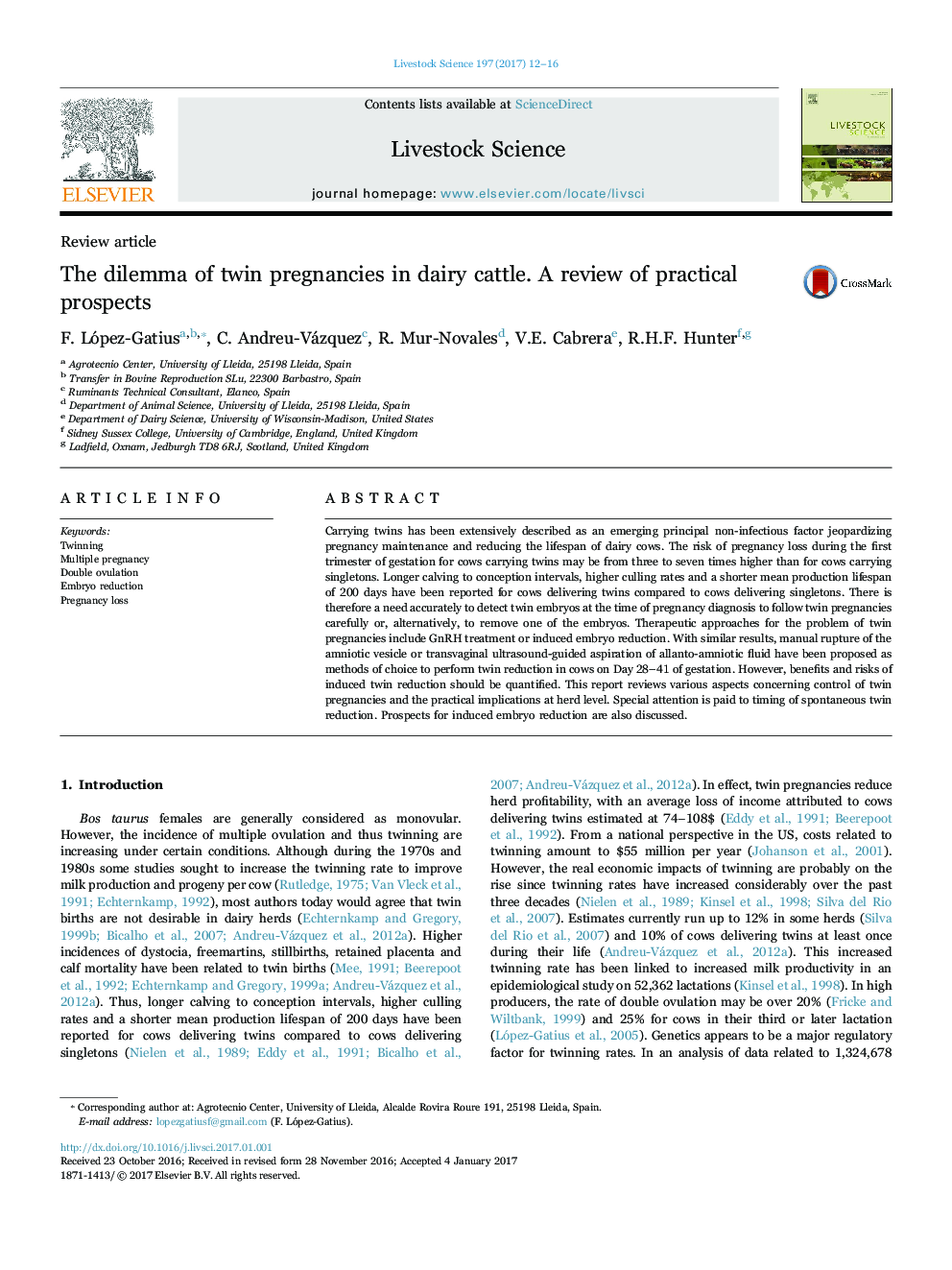| Article ID | Journal | Published Year | Pages | File Type |
|---|---|---|---|---|
| 5543068 | Livestock Science | 2017 | 5 Pages |
Abstract
Carrying twins has been extensively described as an emerging principal non-infectious factor jeopardizing pregnancy maintenance and reducing the lifespan of dairy cows. The risk of pregnancy loss during the first trimester of gestation for cows carrying twins may be from three to seven times higher than for cows carrying singletons. Longer calving to conception intervals, higher culling rates and a shorter mean production lifespan of 200 days have been reported for cows delivering twins compared to cows delivering singletons. There is therefore a need accurately to detect twin embryos at the time of pregnancy diagnosis to follow twin pregnancies carefully or, alternatively, to remove one of the embryos. Therapeutic approaches for the problem of twin pregnancies include GnRH treatment or induced embryo reduction. With similar results, manual rupture of the amniotic vesicle or transvaginal ultrasound-guided aspiration of allanto-amniotic fluid have been proposed as methods of choice to perform twin reduction in cows on Day 28-41 of gestation. However, benefits and risks of induced twin reduction should be quantified. This report reviews various aspects concerning control of twin pregnancies and the practical implications at herd level. Special attention is paid to timing of spontaneous twin reduction. Prospects for induced embryo reduction are also discussed.
Related Topics
Life Sciences
Agricultural and Biological Sciences
Animal Science and Zoology
Authors
F. López-Gatius, C. Andreu-Vázquez, R. Mur-Novales, V.E. Cabrera, R.H.F. Hunter,
